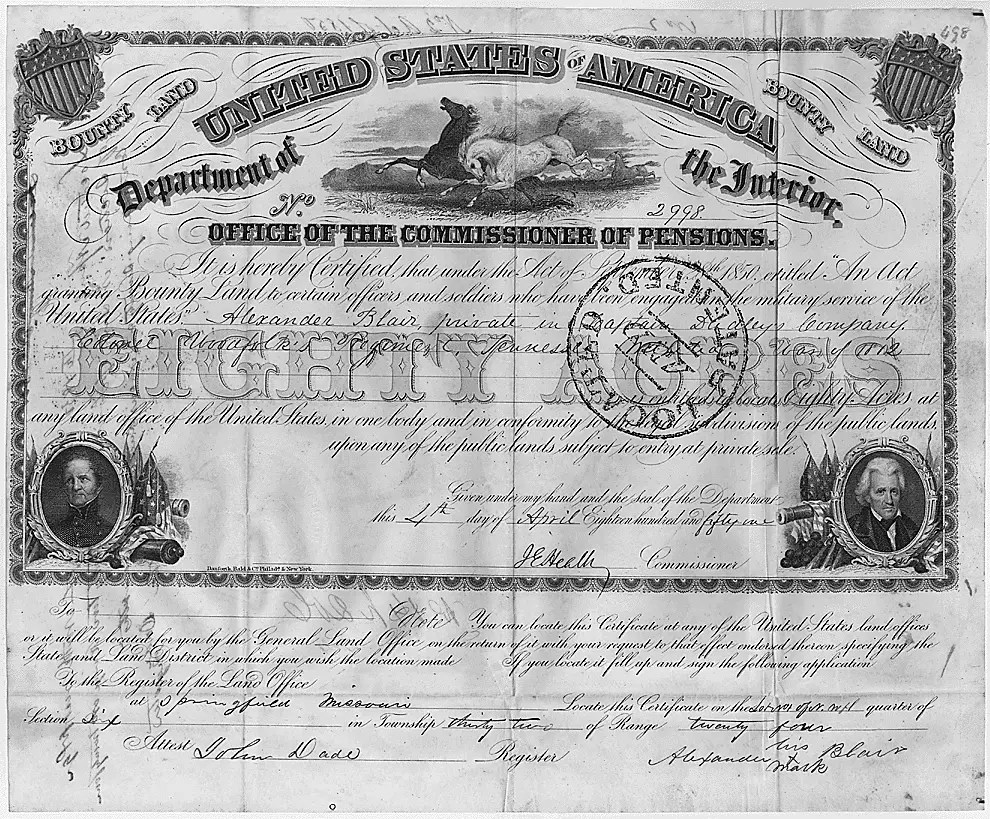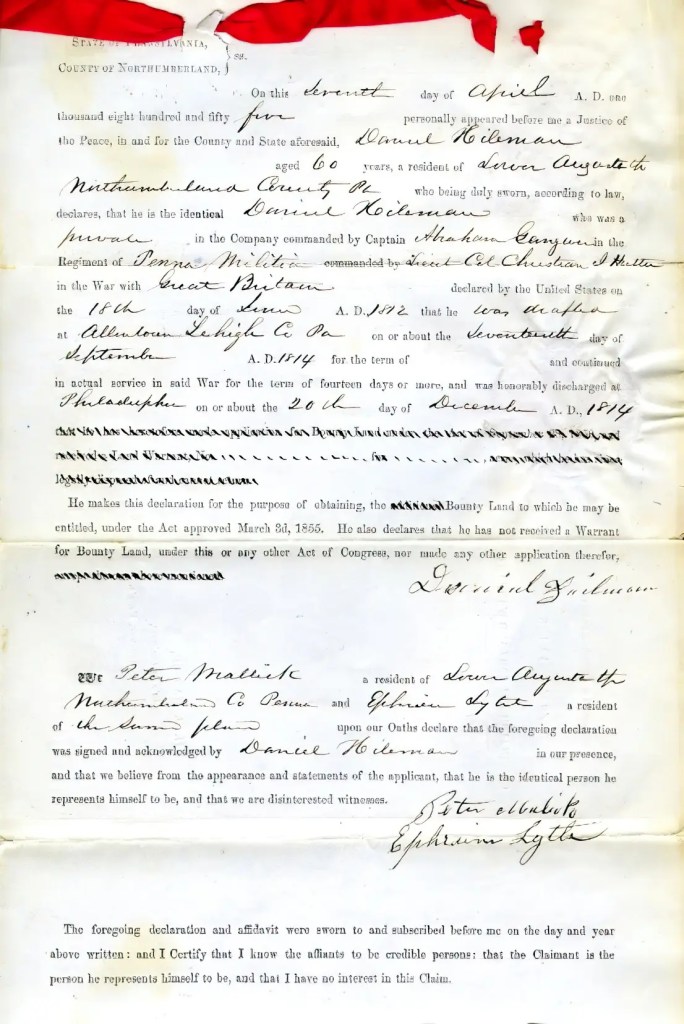
The payment provided to soldiers wounded during the American Revolution is the nation’s oldest form of Veterans benefit. Bounty land warrants are a close second. Three weeks after passing the law compensating the injured, the Continental Congress in September 1776 also approved a resolution awarding grants of public land to all who served in the Continental Army for the duration of the conflict.
The amount of land varied with rank, ranging from 100 acres for privates and noncommissioned officers to 500 acres for colonels and 1,100 acres for major generals. After the Revolution, the federal government reserved several million acres in Ohio for the settlement of Veterans who earned a bounty land warrant. This tract of land was part of the territory the Native American tribes of the region ceded by treaty in 1795 after the Battle of Fallen Timbers.
For a nation with limited financial resources, the bounties were an appealing tool to encourage enlistment and reward military service. Congress readily used the promise of free land for this purpose during the War of 1812 and the Mexican War, although it restricted eligibility to enlisted men and noncommissioned officers. In both conflicts, the size of the grant was fixed at 160 acres.
The government set aside six million acres in Michigan, Illinois, and Louisiana for War of 1812 recruits who enlisted for five years or until discharged. Volunteers for the Mexican War benefited from more generous terms. They qualified for the bounty after only a year of service and could exchange their warrants for any property in the public domain.
In the 1850s, Congress responded to pressure from survivors of the War of 1812 and passed a series of more liberal bounty laws. These measures culminated in the 1855 act that awarded 160 acres to Veterans (or their widows or minor children) of any war since 1790, regardless of rank or type of military service, provided they served at least 14 days or fought in one battle.

More than 260,000 Veterans or their heirs claimed warrants under the 1855 act. Overall, the different bounty land laws enacted between 1776 and 1855 resulted in the federal government dispensing over 500,000 warrants encompassing more than 61 million acres. How many Veterans used the warrants to obtain a parcel of land is unknown. Most probably sold them to land speculators at a reduced rate.
The practice of issuing land grants to new recruits ended with the Mexican War. During the Civil War, Congress decided to make the western lands freely available to all Americans by passing the Homestead Act of 1862. While this legislation and the earlier bounty laws were a boon to those who acquired property, these measures had a devastating effect on the Indian nations that were dispossessed from the land.
By Jeffrey Seiken, Ph.D.
Historian, Veterans Benefits Administration
Share this story
Related Stories

History of VA in 100 Objects
Object 96: Postcard of Veterans Vocational School
In 1918, the government created the first nationwide vocational training system to help disabled Veterans acquire new occupational skills and find meaningful work. Over the next 10 years, more than 100,000 Veterans completed training programs in every field from agriculture and manufacturing to business and photography.

History of VA in 100 Objects
Object 95: 1840 Census of Pensioners
In a first, the 1840 census collected data on Veterans and widows receiving a pension from the federal government. The government published its findings in a stand-alone volume titled “A Census of Pensioners for Revolutionary or Military Services.”

History of VA in 100 Objects
Object 94: Southern Branch of the National Home
The Southern Branch of the National Home for Disabled Volunteer Soldiers opened in Hampton, Virginia, in late 1870. The circumstances surrounding the purchase of the property, however, prompted an investigation into the first president of the National Home’s Board of Managers, Benjamin Butler.


